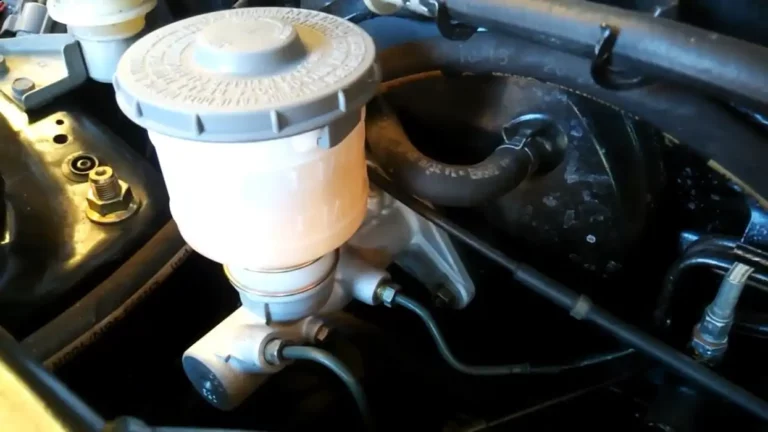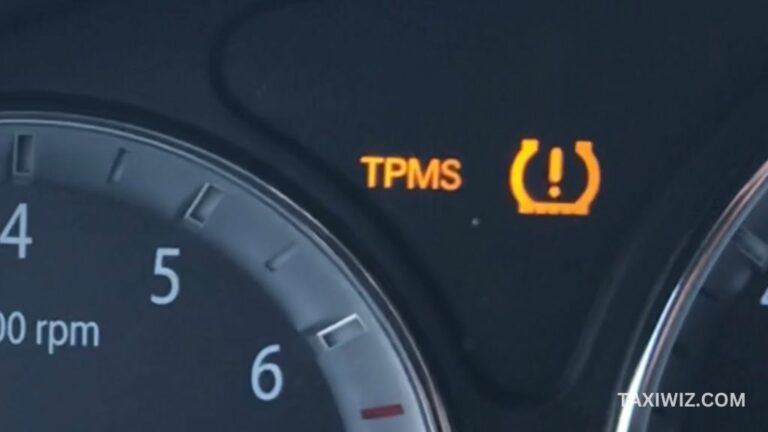Turn Signal Indicator Not Working But Bulb is Good – How To Fix?
All vehicle needs a turn signal to alert others of a lane change. When a turn signal bulb is good but doesn’t work, it’s annoying.
This problem could have been caused by a range of different circumstances,, such as a fuse that has blown or a turn signal switch that is broken, etc. These issues may require advanced fast and troubleshooting.
This article will show the causes of turn signals not working, even with a good bulb, and provide solutions that you can apply on your own. Ensure road safety by checking and fixing turn signal issues.
Why Turn Signal Indicator Not Working But Bulb Is Good?
Here are various signs why your turn signal isn’t functioning, yet the bulb is fine:
- Solid Turn Signal Indicator: It is because of damaged or corroded wiring
- Turn Signal Indicator Blinking Frequently: The reason is a faulty flasher relay
- Both light bulbs on one side turn on but do not blink: The main cause is a faulty turn signal switch
- Both the right and left turn indicators are faulty: It occurs because the flasher unit is malfunctioning.
- If all four turn signals come on and stay on when you trigger either side or the hazards: it could be due to a bad flasher unit or a weak electrical system.
- Flashing, whether fast or slow: This is because of a faulty flasher or wiring issues, or Faulty ground connection.
- Also, watch this video to know turn signal problems and ways to make basic diagnoses.
Finally, turn signals are a vital vehicle safety device; any malfunction should be addressed carefully. If you see any of the following signs, have a professional technician evaluate your car to identify and remedy the issue.
Related Post: Headlights Flashing When Car Is Off:
How To Fix Turn Signal Not Working But the Bulb is Good?
There can be various reasons for malfunctions in the turn signal, even if the bulb is good. Here are some possible causes and solutions for turn signals not working even when the bulb is good:
Possible Problems:
- Blown fuse
- Faulty flasher relay
- Damaged or corroded wiring
- Malfunctioning turn signal switch
- Faulty ground connection
Solutions:
- Check and replace the fuse.
- Check and replace the flasher relay.
- Inspect wiring connections and repair or replace damaged wiring as needed.
- Replace the turn signal switch.
- Check and repair the ground connection.
It’s important to remember that the particular source of the problem might differ based on the vehicle’s make and model. Hence, it is preferable to see a professional technician if you are unclear about the cause or how to make the necessary repairs.
Let us discuss the ways to solve the turn signal issues.
Blown Fuse
Let us discuss the causes and solution of a blown fuse.
Causes:
There might be a few reasons why the fuse blows up.
- A short circuit,
- broken wiring,
- or a broken turn signal switch
Can all cause the turn signal fuse to blow. A short circuit happens when electricity flows through a path that wasn’t meant for it. This creates too much heat, which can blow the fuse.
A blown fuse can also be caused by a circuit that is overloaded by broken wiring or a broken turn signal switch. Let’s find it out how you can solve it.
Solutions:
- Switch out the fuse: When a turn signal fuse blows, the first thing to do is to replace the old fuse with a new one. To keep the circuit from getting too full, it’s important to use the right amperage rating.
- Make sure there’s no short circuit: If the new fuse blows as soon as it is put in, there may be a short circuit in the wiring or turn signal switch. Check the wiring harness for signs of damage or wear, and replace any wires that are damaged or have become corroded. Or wrap them with electrical tape(our pick/ our recommendation).
- Reduce the load on the circuit. If the circuit is overloaded, it’s important to reduce the load by using the turn signals less. Don’t use your turn signals too much, especially when you don’t need to, so you don’t overload the circuit.
- Get help from a professional: If you don’t know why the turn signal fuse blew or you don’t feel comfortable making electrical repairs, it’s best to call a professional mechanic or electrician for help.
Also, see this video to fix a blown fuse in a step-by-step process.
Faulty Flasher Relay
Let us discuss the causes and solutions for faulty flasher relays.
Causes:
There are many things that can go wrong with a flasher relay, such as
- wear and tear over time,
- exposure to heat or moisture,
- or electrical problems.
Over time, the contacts inside the flasher relay can wear out or get rusty, which can make the relay stop working. The relay can also be damaged by heat or moisture, which can cause it to fail.
Electrical problems, like a short circuit or a circuit that is overloaded, can also damage the flasher relay. Let us discuss the solutions.
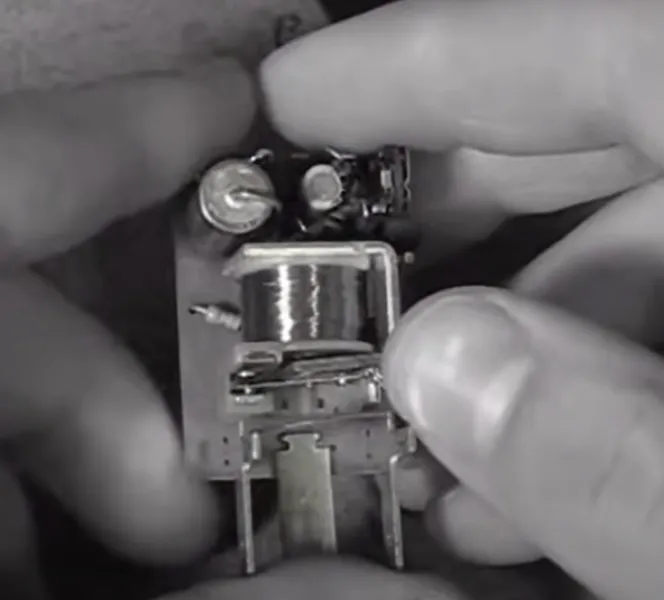
Solutions:
- Replace the flasher relay: The flasher relay is a small piece of electrical wiring that controls how fast the turn signals blink. If it is broken, it could make the light blink quickly or not blink at all. Putting in a new flasher relay (our pick/ our recommendation) is the easiest and most inexpensive thing to do. The old relay is usually located under the dashboard or near the fuse box. It needs to be unplugged before the new one can be plugged in.
- Check for loose connections: Before you replace the flasher relay, check the turn signal system for any loose connections. Loose connections can cause the turn signals to act up sometimes, like flickering or not blinking at all. Make sure that all of the connections, like the bulbs, sockets, and wiring, are clean and tight.
- Get a new turn signal switch(our pick/ our recommendation)
Damaged or Corroded Wiring
Damaged or corroded wiring causes and solutions are given below.
Causes:
- Moisture,
- severe temperatures,
- physical impact, and
- time
It can damage or corrode wire. Moisture may corrode or rust wires, breaking the circuit. High temperatures can break or weaken wire insulation, exposing wires and causing damage. Accidents and impacts can break wires.
Eventually, wear and strain can make wires brittle and break, interrupting the circuit. Wires corrode when exposed to elements, including humidity, heat, dust, chemicals, and moisture. Here are some solutions-
Solution:
- Check the wiring: The first step is to look at the wiring for damage or corrosion that you can see. Look for wires that are sticking out, insulation that is broken or cracked, or signs of rust or corrosion. If there is any damage, the wires that are broken will need to be replaced.
- Replace the damaged wires: If broken wires are found, they will have to be replaced. You can do this by adding a new piece of wire or by replacing the whole wire harness. To make sure the connection works, it is important to use the right gauge wire and connectors.
- Clean corroded connections: If the wiring is corroded, use a wire brush or sandpaper to clean the connections. This will get rid of any corrosion and make the connection better. Use a contact cleaner to get rid of any leftover dust.
Always clean the socket with electrical contact cleaner(our pick/ our recommendation), which can be found at auto parts shops.
- Change the turn signal switch: If the wiring is in good shape and the problem still happens, you may need to change the turn signal switch. The turn signal switch sends the signal to the flasher relay. The flasher relay then turns on the turn signals. If a switch is broken, the light might blink only sometimes or not at all.
Related Post: Understanding The Acura VSA Light (Meaning, Causes and Fixes)
Malfunctioning Turn Signal Switch
There is no connection between the turn signal lever and the turn signal light if the switch malfunctions or breaks.
Causes
There are several symptoms you may notice when it happens, such as
- wear and tear over time,
- physical damage, or
- electrical problems.
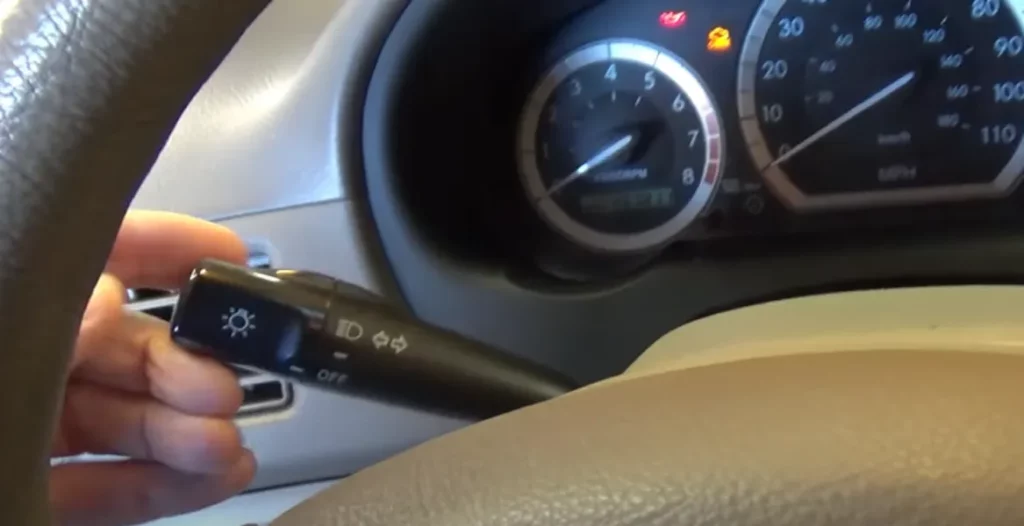
Solutions:
- Check the turn signal switch: The first step is to look for damage or wear on the turn signal switch. Check for plastic that is broken or cracked, connections that are loose, or signs of rust or corrosion. If there is any damage, the switch will need to be changed.
- Test the switch: Even if the switch looks fine, it should be checked with a multimeter to make sure it is working properly. This will help find any electrical problems that might be the cause of the problem.
- Change the turn signal switch: If the switch is broken, it needs to be changed. To do this, you can take out the old switch and put in a new one. It is important to use the right switch for your car’s make and model when replacing one.
- If it turns out that the multifunction switch is broken, it will need to be replaced. To replace the turn signal switch, follow these instructions-
- Remove the battery.
- Take off the cover(s) to expose the switch.
- Pull the wires out of the switch’s wiring harness.
- Take the switch off of its mounting and unscrew the screws holding it.
- To remove the switch from its case, just pull it.
- Reverse these procedures to replace the switch.
Faulty Ground Connection
Take a look at the causes and solutions for faulty ground connections.
Causes:
A bad ground connection is often caused by
- corrosion or rust on the grounding wire or terminal,
- connections that are loose or broken, or
- a bad grounding strap.
- Also, if there is more than one ground connection for the turn signals and one of them is broken, it can affect how well the turn signals work as a whole.
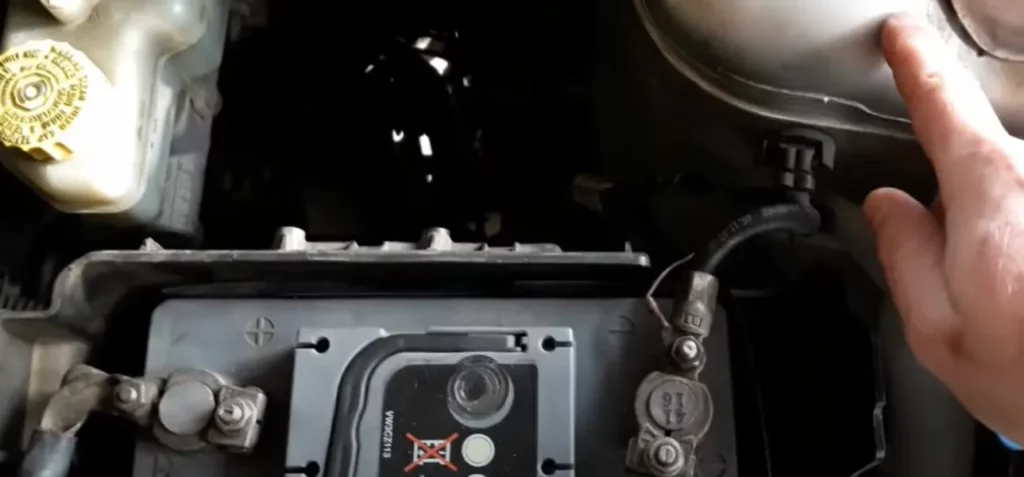
Solutions:
To repair your car’s bad ground wiring, you’ll need some basic electrical understanding. If the defect is a ground issue, resolving it will only address the “turn signal not functioning” problem.
- You must trace the ground wires to determine which are related to the turn signal. Unscrew the wires, rewire them if necessary, and re-screw them.
- You may also clean up the connection and confirm that the ground connection is correct. Check to see whether the turn signals are now operational.
Repairing Turn Signal on Your Own
If your car’s indicators aren’t working properly, follow these steps.
Step 1: First, park your vehicle on flat ground and turn off the engine.
Step 2: The second step is to make sure the electrical system is powered up for testing by leaving the ignition in the “on” position but without starting the engine.
Step 3: Examine the power distribution center (PDC) or fuse box to ensure sure no fuses have blown in the system. Use your whole concentration to find the fuse.
Step 4: If the turn signal light is not turning on, check the turn signal flasher or relay. A flasher or blinker unit is used in the directional signal system to interrupt the signal and produce the flashing effect.
Step 5: The blinker won’t work if the turn signal switch is broken since the circuit will be short out or open. Input and output power circuits may be checked using a test light.
Step 6: If there’s a problem with the module, many lights can stop functioning. To dim lights or turn them on and off, you need a lighting module. In such a situation, the module will need to be re-flashed or re-programmed.
Frequently Asked Questions (FAQs)
Here are some commonly asked questions answered below.
Does each turn signal have its fuse?
Yes. Each flasher unit has its fuse. The final decision may rest on the car’s layout. Although fuses are supposed to power each turn signal, modern automobiles use a dedicated relay for each signal instead.
How to identify and repair electrical problems in turn signal issues?
We need to inspect the electrical system and make any necessary repairs. You should check the turn signal fuses, plugs, and associated wires. Electrical flow, reconnection, and testing may all be determined using an amplifier/multi-meter and electric tester.
Pull the fuse and unplug each plug separately. Check their functionality and replace anything that isn’t up to par. Reconnect the cables. The turn signal switch’s functionality may be verified in this way. If broken, repair. A turn signal must activate.
What is the cost of repairing turn signals?
The price of a new turn signal switch might range from free to several hundred dollars. In general, prices are estimated to be in the $81-$102 range, but other costs, such as taxes and fees, may increase or decrease the final cost.
Conclusion
In conclusion, having trouble with the turn signals is annoying even when the bulbs are OK. On the other hand, if you follow the straightforward, multi-step instructions for troubleshooting turn signals, you should be able to have your issue fixed in no time.
However, these problems can be avoided if your automobile is regularly serviced and maintained. You can try fixing a broken turn signal on your own, but if you’re having trouble, it’s probably best to call in a professional. Keep in mind that putting off fixing a broken turn signal might endanger everyone on the road.
Related Posts:
- Strong Exhaust Smell When Idling [6 Issues To Look Out For]
- Engine Temp Spikes and then Returns to Normal: Causes and Fixes
- Reasons Why Oil In Coolant Reservoir But Car Not Overheating
- Popping Sound When Turning the Steering Wheel at Slow Speed:
- What Causes Brown Sludge In Radiator And How To Fix It


